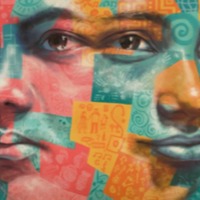
Natasha Herzig
There are an estimated 403,000 people living in modern slavery in the United States (GSI 2018). Sex trafficking exists throughout the country. Traffickers use violence, threats, lies, debt bondage and other forms of coercion to compel adults and children to engage in commercial sex acts against their will. The situations that sex trafficking victims face vary, many victims become romantically involved with someone who then forces them into prostitution. Others are lured with false promises of a job, and some are forced to sell sex by members of their own families. Victims of sex trafficking include both foreign nationals and US citizens, with women making up the majority of those trafficked for the purposes of commercial sexual exploitation. In 2015, the most reported venues/industries for sex trafficking included commercial-front brothels, hotel/motel-based trafficking, online advertisements with unknown locations, residential brothels, and street-based sex trafficking. Natasha was at the mall when a woman offered her a job in the modelling industry. She went to an office building to fill out an application and met the owner of the company. However rather than being given a job, she was kidnapped and forced into prostitution. Natasha was subjected to physical and sexual abuse daily. Natasha tells of the psychological effects of her trafficking and how she is now working towards preventing what happened to her happening ton anyone else.
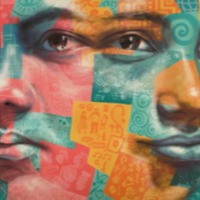
M.
There are an estimated 23,000 people in modern slavery in Belgium (GSI 2018). People are subjected to sex and labour trafficking in the country, with foreign-born people coming primarily from Asia, Eastern Europe, North and Sub-Saharan Africa. Labour traffickers exploit men in restaurants, bars, sweatshops, horticulture, fruit farms, construction, cleaning businesses and retail shops, they also exploit foreign workers in domestic servitude. Sex trafficker exploit Belgian girls, some of whom recruited by local pimps, and foreign children, including Roma. Forced begging within the Romani community in Belgium also occurs, while asylum seekers often have their applications for legal status denied, increasing their vulnerability to trafficking. M was walking to a friend’s house when she was abducted and taken to a house in Vlore where other girls were being kept. After being held there for two weeks, M was smuggled by boat to Italy and then on to Paris by train and then on again to Brussels. Upon arrival, M was forced into prostitution, subjected to physical and sexual abuse daily. One night, M was rescued by police who referred her to a shelter who are assisting M in reuniting with her family.
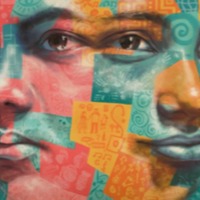
F.
There are an estimated 145,000 people living in conditions of modern slavery in Italy (GSI 2018). Italy is a destination, transit, and source country for women, children, and men subjected to sex trafficking and forced labour. Victims originate from Nigeria, Romania, Morocco, China, and other countries. Female victims are often subjected to sex trafficking in Italy after accepting promises of employment as dancers, singers, models, restaurant servers, or caregivers. Romanian and Albanian criminal groups force Eastern European women and girls into commercial sex. F had ambitions of going to university to study law. One day she was coming home from work when a car stopped in front of her. Two men jumped out and kidnapped her. She was kept for a week by the sea, sexually and physically abused, before being taken to Italy by speedboat. Upon arrival, F was forced into prostitution. She tried to escape once, being deported back to Albania by Italian police, however her trafficker found her and re-trafficked her back to Italy. F was finally able to escape after falling in love with one of her clients who helped her.
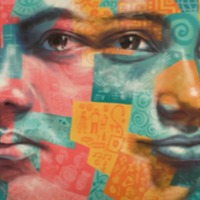
Dee
There are an estimated 9000 people living in modern slavery in Lesotho (GSI 2018). Traffickers exploit domestic and foreign victims in the country, as well as trafficking people from Lesotho abroad. Basotho children are trafficked into domestic servitude and animal herding, especially orphans who migrate to urban areas, in sex trafficking. Basotho women and girls wanting to migrate to South Africa are also often detained by traffickers in prison-like conditions and forced into sexual exploitation. Dee came into the care of Beautiful Dream Society after she was falsely promised a job. Instead she was kidnapped, held against her will and raped repeatedly before being left for dead. With the help of a woman who gave her money, Dee was able to go to the police and have her abuser arrested.
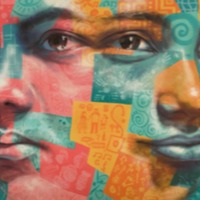
Vian
ISIS has singled out the Yezidi minority, notably its women and children, for particularly brutal treatment. In August 2014, ISIS fighters abducted hundreds, possibly thousands, of Yezidi men, women and children who were fleeing the IS takeover from the Sinjar region, in the north-west of the country. Hundreds of the men were killed and others were forced to convert to Islam under threat of death. Younger women and girls, some as young as 12, were separated from their parents and older relatives and sold, given as gifts or forced to marry ISIS fighters and supporters. Vian was 15 years old when kidnapped by ISIS in August 2014 and held for 4 months in Raqqa, Syria. Vian tells of the atrocities she witnessed against girls as young as 7 by ISIS men. One afternoon Vian ran away and was able to make it to Turkey where her Uncle picked her up and brought her home to her family.
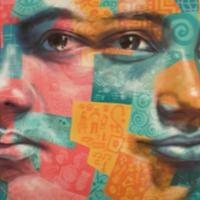
Ariana
ISIS has singled out the Yezidi minority, notably its women and children, for particularly brutal treatment. In August 2014, ISIS fighters abducted hundreds, possibly thousands, of Yezidi men, women and children who were fleeing the IS takeover from the Sinjar region, in the north-west of the country. Hundreds of the men were killed and others were forced to convert to Islam under threat of death. Younger women and girls, some as young as 12, were separated from their parents and older relatives and sold, given as gifts or forced to marry ISIS fighters and supporters. Ariana was kidnapped by ISIS in August 2014 when they invaded her school, divided the girls up and sold them. Ariana was held in ISIS captivity for 9 months and sold five times to different men. She was finally able to escape when she convinced one of the men to sell her back to her family.
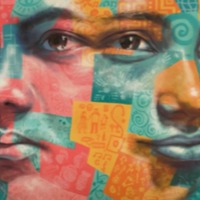
Nadia Murad
ISIS has singled out the Yazidi minority, notably its women and children, for particularly brutal treatment. In August 2014, ISIS fighters abducted hundreds, possibly thousands, of Yezidi men, women and children who were fleeing the IS takeover from the Sinjar region, in the north-west of the country. Hundreds of the men were killed and others were forced to convert to Islam under threat of death. Younger women and girls, some as young as 12, were separated from their parents and older relatives and sold, given as gifts or forced to marry ISIS fighters and supporters. Nadia Murad lived in the Sinjar district of Kurdistan in northern Iraq. Her village, Kocho, was taken by ISIS in August 2014 and people were told to convert to Islam or die. When ISIS failed to convert the Yazidi villagers, they first took the men and executed them, they took young boys to train in combat and kidnapped women and girls and enslaved them in domestic and sexual slavery. Nadine was taken with other women and girls to Mosul where they were distributed among Daesh fighters. Nadine was raped daily, forced to read the Koran and pray. After one unsuccessful attempt, Nadia was able to escape with the help of a Muslim family that lived nearby. She made it to the border with Kurdistan and was then among 1000 Yazidi women taken to Germany for treatment for their trauma.
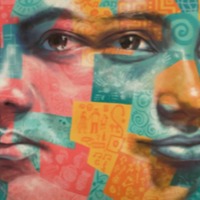
Noor
There are an estimated 520,000 people in enslavement in the Arab States. Within the region, Syria, Iraq, and Yemen had both the highest prevalence of modern slavery and the highest absolute number of victims, accounting for 76 percent of the victims in the region. There is an estimated 174,000 people enslaved in Iraq (GSI 2018). Women and girls have been kidnapped by ISIS. Bought and sold like cattle in markets, raped and tortured daily, they have experienced unspeakable horrors at the hands of their captors. Noor is 22. She was kidnapped by ISIS in 2012, from Kojo in Northern Iraq. She was held captive for several months, suffering daily rape and horrific torture. Incredibly, she managed to escape and today, she is desperate to share her experiences and to raise awareness about the ongoing suffering among those who have escaped.
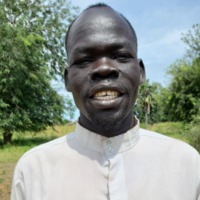
Makuom Mawein Tong
There are an estimated 465,000 people living in modern slavery in Sudan (GSI 2018). Between 1983 and 2005, the central government of Sudan enslaved tens of thousands of black South Sudanese Christian and traditionalist people. It was part of a genocidal war against South Sudan, with a simple aim: to force South Sudan to become Arab and Muslim. Makuom was born in Akoch Atong Mabil village, north of Aweil town. As a young boy in 1980s his father enrolled him in a school near his village, but a few days later, news was everywhere that Arabs were planning to attack Dinka tribe villages. His father pulled him from school and kept him at home because he was so afraid of Arab attack. At night during the dry season, Arabs attacked his village. Makuom ran and hid in a nearby forest. Many people from his village ran to the forest, but Arabs followed them. His father was killed by Arabs and captured him with others. All children who were captured were forced to walk with Arabs to north Sudan.
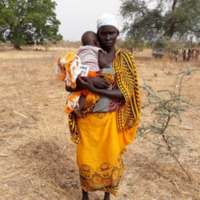
Abuk Akot Wol
There are an estimated 465,000 people living in modern slavery in Sudan (GSI 2018). Between 1983 and 2005, the central government of Sudan enslaved tens of thousands of black South Sudanese Christian and traditionalist people. It was part of a genocidal war against South Sudan, with a simple aim: to force South Sudan to become Arab and Muslim. Abuk Akot Wol was kidnapped one morning and taken to northern Sudan. She tells of her experience.
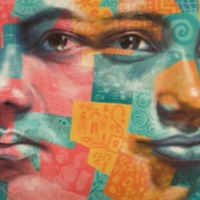
Jamie
There are an estimated 403,000 people living in modern slavery in the United States (GSI 2018). Sex trafficking exists throughout the country. Traffickers use violence, threats, lies, debt bondage and other forms of coercion to compel adults and children to engage in commercial sex acts against their will. The situations that sex trafficking victims face vary, many victims become romantically involved with someone who then forces them into prostitution. Others are lured with false promises of a job, and some are forced to sell sex by members of their own families. Victims of sex trafficking include both foreign nationals and US citizens, with women making up the majority of those trafficked for the purposes of commercial sexual exploitation. In 2015, the most reported venues/industries for sex trafficking included commercial-front brothels, hotel/motel-based trafficking, online advertisements with unknown locations, residential brothels, and street-based sex trafficking. Jamie was kidnapped from her home by three men and forced into commercial sexual exploitation. She was subjected to rape and sexual violence every day
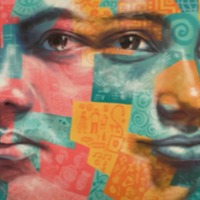
Ram
There are an estimated 610,000 people living in conditions of modern slavery in Thailand (GSI 2018). The country is a source, destination and transit country for men, women and children subjected to forced labour and sex trafficking. Thailand’s commercial sex indusrty remains vast, increasing vulnerabilities for sex trafficking. Children are victims of sex trafficking in brothels, massage parlours, bars, karaoke lounges, hotels and private residences. People are trafficked from other Southeast Asian countries, Sri Lanka, Russia, Uzbekistan and some African countries. It is also a transit country for people from China, North Korea, Bangladesh, India and Burma. Ram ran away from an abusive home and was forced to live on the streets. One day while stealing food from a local market, Ram was kidnapped by a street gang. Ram was forced to steal from tourists during the day and at night was sold for sex to older men. Ram’s exploitation finally came to an end when his trafficker was arrested.
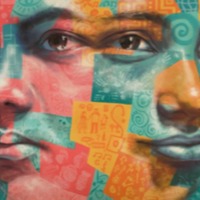
Grace Akello
There are an estimated 465,000 people living in modern slavery in Sudan (GSI 2018). Between 1983 and 2005, the central government of Sudan enslaved tens of thousands of black South Sudanese Christian and traditionalist people. It was part of a genocidal war against South Sudan, with a simple aim: to force South Sudan to become Arab and Muslim. Grace Akello was abducted from her high school dorm in October 1996 by the Lord’s Resistance Army. She, along with 29 other girls, was forced to march to Sudan under the threat of death if they could not keep up. Upon arrival, she was given an AK47 and told hunger would teach her to shoot. Grace was subjected to sexual violence for seven months before she was able to escape in April 1997.
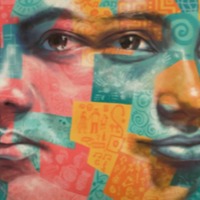
Hauwa
There are an estimated 1,386,000 people living in modern slavery in Nigeria (GSI 2018). Since 2009, Nigeria’s homegrown Islamist insurgent movement, Jama’atu Ahlis Sunna Lidda’awati wal-Jihad, popularly known as Boko Haram, which means “Western Education is Forbidden,” has waged a violent campaign against the Nigerian government in its bid to impose Islamic law. The attacks have increasingly targeted civilians, mainly in the northeastern states of Borno, Yobe, and Adamawa. Borno State, the birthplace of Boko Haram, has suffered the highest number of attacks. A range of issues, including widespread poverty, corruption, security force abuse, and longstanding impunity for a range of crimes have created fertile ground in Nigeria for militant armed groups like Boko Haram. Hauwa was abducted by Boko Haram in 2013. She was forced to convert to Islam and kill for the insurgents. Hauwa was able to escape forced marriage in the camp where she was being held by pretending to have stomach pains and being sent to the hospital.
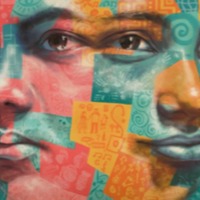
Gloria
There are an estimated 1,386,000 people living in modern slavery in Nigeria (GSI 2018). Since 2009, Nigeria’s homegrown Islamist insurgent movement, Jama’atu Ahlis Sunna Lidda’awati wal-Jihad, popularly known as Boko Haram, which means “Western Education is Forbidden,” has waged a violent campaign against the Nigerian government in its bid to impose Islamic law. The attacks have increasingly targeted civilians, mainly in the northeastern states of Borno, Yobe, and Adamawa. Borno State, the birthplace of Boko Haram, has suffered the highest number of attacks. A range of issues, including widespread poverty, corruption, security force abuse, and longstanding impunity for a range of crimes have created fertile ground in Nigeria for militant armed groups like Boko Haram. Gloria was abducted by Boko Haram in 2014. She was forced to convert to Islam, was married off to an insurgent and subjected to sexual violence.
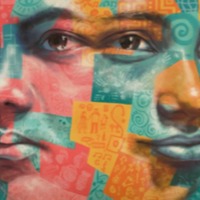
Hadiza
There are an estimated 1,386,000 people living in modern slavery in Nigeria (GSI 2018). Since 2009, Nigeria’s homegrown Islamist insurgent movement, Jama’atu Ahlis Sunna Lidda’awati wal-Jihad, popularly known as Boko Haram, which means “Western Education is Forbidden,” has waged a violent campaign against the Nigerian government in its bid to impose Islamic law. The attacks have increasingly targeted civilians, mainly in the northeastern states of Borno, Yobe, and Adamawa. Borno State, the birthplace of Boko Haram, has suffered the highest number of attacks. A range of issues, including widespread poverty, corruption, security force abuse, and longstanding impunity for a range of crimes have created fertile ground in Nigeria for militant armed groups like Boko Haram. Hadiza was abducted from her village by Boko Haram in November 2013. Though she tried to escape, she was captured, forced to convert to Islam and married off to an insurgent.
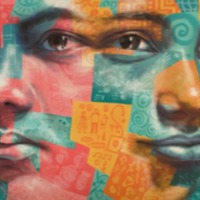
Kyial
There are an estimated 24,000 people living in modern slavery in Kyrgyzstan (GSI 2018). The country remains a source, transit and destination country for men, women and children subjected to forced labour and sex trafficking. Moreover, women in the country are often subject to kidnapping and forced marriage, an act that was only outlawed in the country in 2013 when authorities recognised it could lead to marital rape, domestic violence and psychological trauma. However, in some communities the practice remains common. Kyial was 20 years old when she was kidnapped by an acquaintance. She kept calling her mother for help, but to no avail. Kyial was raped on the first night in her kidnapper’s home. Unlike many other women, Kyial was able to escape. She contacted her friend, who in turn connected her to Open Line, an NGO based in Bishkek that offers kidnapped women counselling and legal advice.
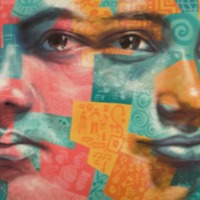
Madihah
There are an estimated 518,000 people living in modern slavery in Egypt, 465,000 in Sudan and an estimated 451,000 in Eritrea (GSI 2018). Since 2006 tens of thousands of Eritreans fleeing widespread human rights abuses and destitution have ended up in Egypt’s Sinai Peninsula. Until 2010, they passed through Sinai voluntarily and generally without any problems and crossed in to Israel. However, since then, Sudanese traffickers have kidnapped Eritreans in eastern Sudan and sold them to Egyptian traffickers in Sinai who have subjected at least hundreds to violence in order to extort large sums of money from their relatives. Madihah* defected from the Eritrean army and was kidnapped by smuggler at the Sudan border and then taken to Sinai. Madihah was subjected to physical and sexual abuse, and forced to work as a cleaner.
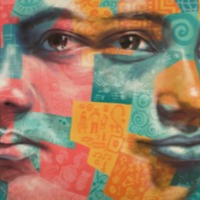
Lemlem
There are an estimated 518,000 people living in modern slavery in Egypt, 465,000 in Sudan and an estimated 451,000 in Eritrea (GSI 2018). Since 2006 tens of thousands of Eritreans fleeing widespread human rights abuses and destitution have ended up in Egypt’s Sinai Peninsula. Until 2010, they passed through Sinai voluntarily and generally without any problems and crossed in to Israel. However, since then, Sudanese traffickers have kidnapped Eritreans in eastern Sudan and sold them to Egyptian traffickers in Sinai who have subjected at least hundreds to violence in order to extort large sums of money from their relatives. Lemlem* left Eritrea after defecting from the army and planned to travel to Sudan. However, she was kidnapped on the way and transferred to Sinai. Lemlem was subjected to physical abuse and torture until she paid them a ransom to release her.
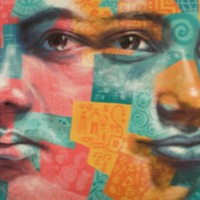
Awate
There are an estimated 518,000 people living in modern slavery in Egypt, 465,000 in Sudan and an estimated 451,000 in Eritrea (GSI 2018). Since 2006 tens of thousands of Eritreans fleeing widespread human rights abuses and destitution have ended up in Egypt’s Sinai Peninsula. Until 2010, they passed through Sinai voluntarily and generally without any problems and crossed in to Israel. However, since then, Sudanese traffickers have kidnapped Eritreans in eastern Sudan and sold them to Egyptian traffickers in Sinai who have subjected at least hundreds to violence in order to extort large sums of money from their relatives. Awate* was kidnapped on the way to Israel from Eritrea. She was kept for two weeks in Sudan and then transferred to Sinai where she was subjected to physical and sexual abuse. She was finally released after her family paid the smuggler’s ransom.